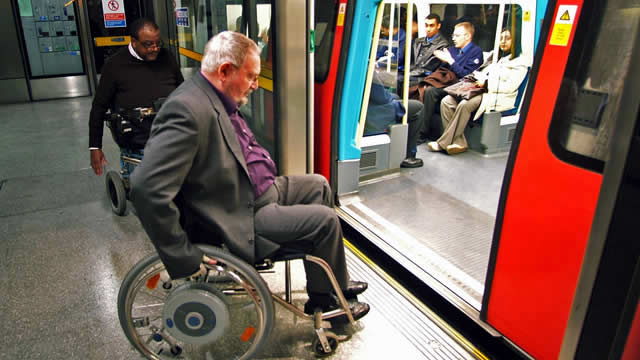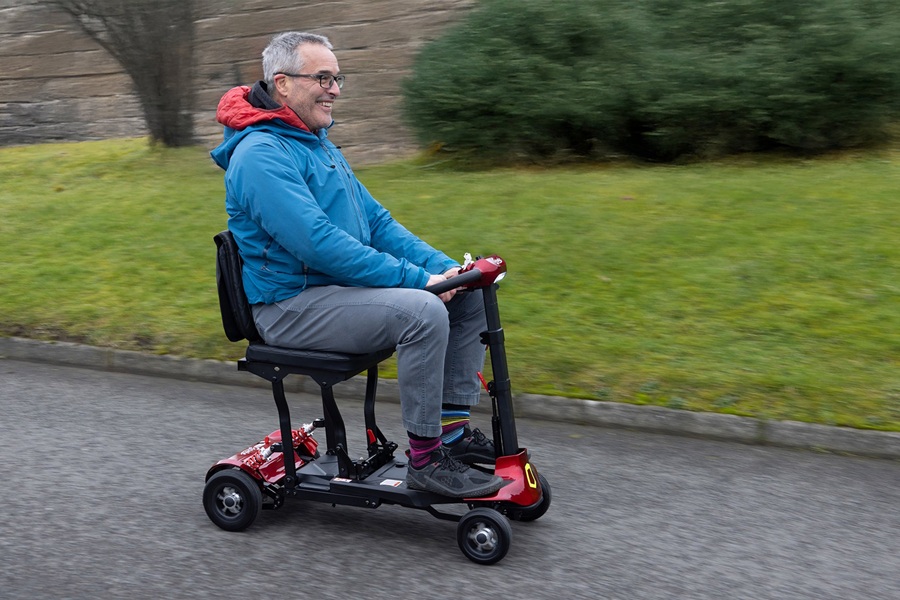
The world as we know it is constantly evolving, especially in today’s social climate. This is thanks to greater knowledge and awareness of issues that may not have been given the attention they needed in the past.
This sort of change keeps pushing the world forward.
One area in which our society has changed for the better is in the world of mobility. Not only the developments in mobility equipment, such as mobility scooters and powerchairs but also the efforts that have been made to make the world as accessible as possible.
Today, easy access buildings, flat floors and disability access is commonplace.
It may be hard to imagine now, but turn back the clock 25 years, and things were quite different! There was very little in the way of disabled access back then. Buses and trains had small, cumbersome steps to enter the vehicle, and many buildings had almost no wheelchair ramps or access.
In this article, we’ll look at the Disability Act and the Equality Act, and how they have impacted those who rely on mobility support.
Things began to change in 1995 when the first real measures were put in place to make Britain accessible to all.
This would take the form of the Disability Discrimination Act of 1995. This Act made it ‘unlawful to discriminate against people in respect of their disabilities’.
The act would span a variety of sectors, including employment, the provision of goods and services, education and transport. The first of these changes was to provide greater access to buildings and amenities for those with disabilities.
Four years later in 1999, the first amendments were made to the act. The amendment made it a mandatory requirement for businesses and public services to provide suitable mobility access.
All buildings – from huge banks to small local cafés – had to install wheelchair ramps.
Public areas had to provide accessible amenities, such as park tables being raised higher to allow for wheelchairs, and smooth walkways and pathways created to make travel less bumpy for mobility equipment users.
With the passing of the Equality Rights Act 2010, it was a legal requirement for all new buildings to have suitable disability access when built.
This included all new buildings in the following sectors:
The introduction of these Acts has brought about significant change to buildings and outside spaces, and positive life changes for those with disabilities.

Public transport is where we saw the impact of the act the most. Before the Act was introduced, many modes of public transport were hampered by poor access, making it difficult for those with mobility difficulties to get around without a car.
99% of bus models in operation in the UK today offer excellent disability access. Most buses now have flat floors and adjustable suspension to lower the height of the bus. Many also have a pull-out access ramp to make it even easier for wheelchair and scooter users. Inside, there are designated spaces designed to accommodate those using mobility equipment.
To board a bus with a mobility scooter you must comply with the following regulations.
On very rare occasions, you may see an old configuration of bus in active service on UK roads. Most of these units have been retired or converted to meet new transport regulations.
Train travel has been slower in adapting to new regulations. Whilst most train operators running on UK lines now have a fleet that abides by these regulations, there are still some older models being used – this is due to the time it takes to build new models, with the standards being much higher than buses.
All new trains in operation today can accommodate a wheelchair that is 700mm wide and 1200mm long. In addition, they are designed with flat floors and feature dedicated spaces for wheelchairs.
Some operators still run older models and modify them to meet modern standards. The modified units offer a more limited number of wheelchair spaces with the oldest units only being able to accommodate a 550mm wide wheelchair.
All operators are required to ensure all trains are equipped with an access ramp or have a flat floor. This allows for easy wheelchair and walker access – even on older units.
Yet, for scooter users, things get a bit more complicated. This is namely due to the size and variety of scooters on the market – with some scooters being too large to board a train. The main concern being that a mobility scooter will not be able to manoeuvre safely inside the carriage, or the scooter exceeds the weight limit. Many rail operators recommend that you do not attempt to board with a mobility scooter. Instead, they recommend using a lightweight travel wheelchair when using their service.
The requirements can vary from operator to operator. We recommend you look at their websites for more information.
If you are unsure of places you can go and public transport you can use, take a look at our helpful blogs:
If you want to find the most suitable mobility scooter for rail, bus or air, contact the experts at Monarch Mobility who will be happy to talk you through your options and provide a free home demo.

Will you be joining us at the Motability Harrogate event on the 1st and 2nd of August?